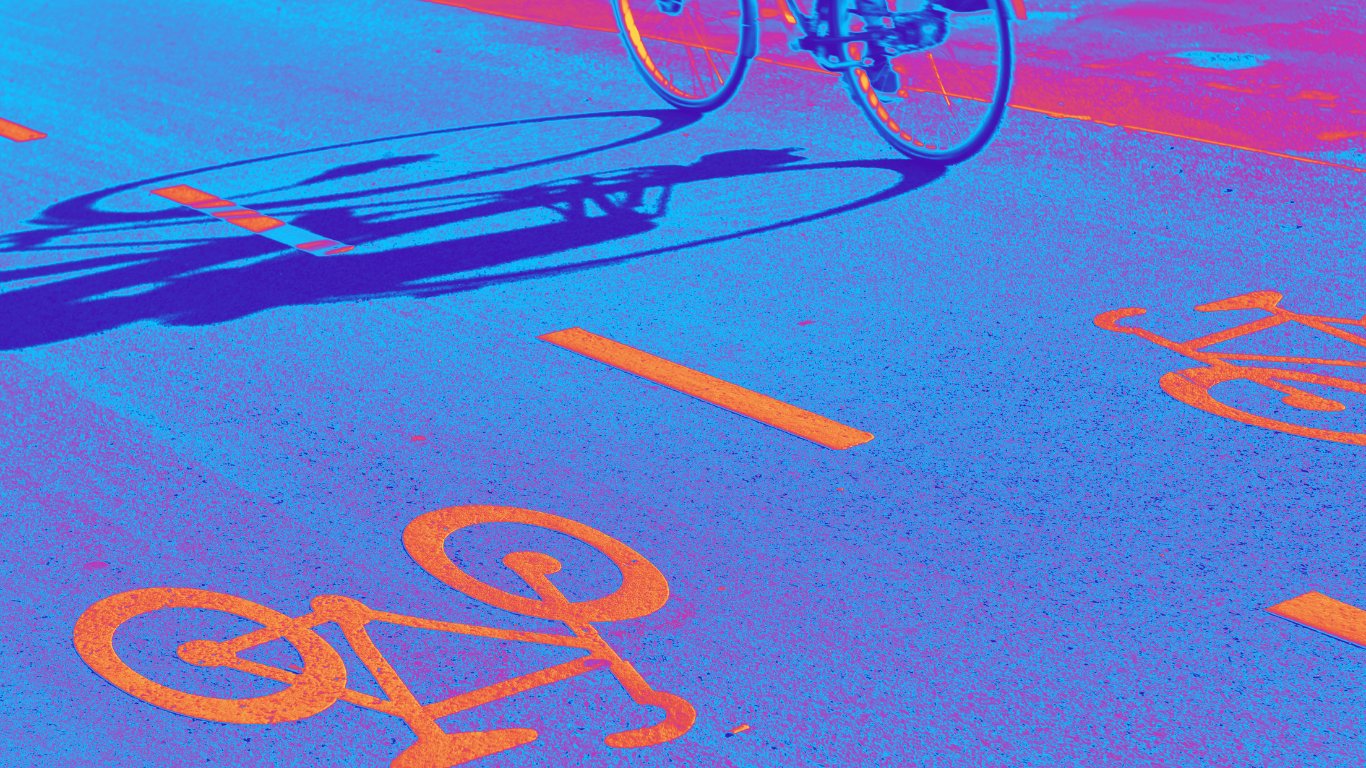Cycling Safety: No One In A Position To Do Anything About It Really Cares

Some days, when you go out and ride your bike, you arrive back home thankfully safe and sound but with the distinct impression that no one in a position to do anything about it cares. But that’s simply not the case: I care, you care, and manufacturers in the cycling industry care. It’s the governing bodies and people in vehicles who seem either not to care about cyclists or even to have active hostility towards us.
However, here’s a list of people who don’t appear to care based on what we too frequently experience as cyclists:
- Legislative bodies, primarily provincial and municipal
- Many (but not all) elected officials
- Officers of the law who actively enforce laws and bylaws
- Vehicle drivers
- Owners of class 2 and class 3 e-bikes who don’t seem to know or care where they are not legally permitted to ride
- Companies and municipalities who lay pavement and patch up roads
While it saddens me to say it, nearly every cyclist has a story where their safety was compromised because of driver inattention or roads that are fixed to unsafe cycling conditions. Many have stories of hit-and-run incidents and near-misses caused by driver error, failing to yield the right of way, or failing to even look to see if there was a cyclist. Sadly, there are far too many incidents of vehicles taking active measures to endanger cyclists. This ranges from sudden braking in front of us, swerving towards us, trying to squeeze us off the road, opening doors while parked by a bike travel path, and throwing stuff at a cyclist from a vehicle.
Be Safe Out There: Things You Can Do For Yourself
Here are some things we can all do as cyclists to maximize our safety while riding:
- Wear clothing that enhances visibility. Bright colors, hi-vis and neon colors, bold graphic elements, and color blocking are all great options.
- Wear a helmet that enhances visibility. If possible, avoid black helmets.
- Make sure your cycling kit has some reflective elements.
- Choose your routes with safety in mind. There is no guaranteed 100% safe route or road, but roads with less vehicle traffic might pose a lower risk.
- Ride predictably, lawfully, and with respect to others.
- Actively try to avoid wearing colors that are more difficult to spot in the environment. Try adding something other than black bike shorts to your cycling wardrobe. Even navy blue stands out on the road better. Avoid muted, dull pastels in mauve and terracotta tints, gray, beige, and dull shades of green like moss or forest green. If you want to go green, go full leprechaun, neon, or bright mint to be seen.
Know The Law And Ride Accordingly
Know the laws and bylaws for your area and the roads and trails you are riding on to ride safely and lawfully. In particular, if you or someone you know is on an e-bike, make sure you know the specific regulations and bylaws for that class of bicycle. Unfortunately, this is an area that even many cyclists are unaware of. Currently, there doesn’t seem to be any consumer or rider education or any enforcement on behalf of the provinces or municipalities. However, should enforcement action start in any meaningful way, there will be a lot of riders taken by surprise. Here are some key bylaws and laws everyone should be aware of:
- There is a speed limit on multiway trails that are closed to vehicle traffic. In the City of Edmonton, it is currently just the unspecified speed based on what is safe in the conditions. Hopefully, most cyclists will understand that well enough to approach tightly winding trails with blind spots and trails with a high volume of pedestrian traffic with due care.
- Yield to slower-moving people on trails.
- A bell is required on all bikes on multiway trails. Further, an audible warning should be given before passing another person. It seems that a verbal warning is acceptable. This rule applies to e-scooters as well. I have yet to see anyone on an e-scooter use a bell or issue a verbal warning. Your experience might be different, of course.
- E-bikes have a variety of classifications, classes 1, 2, and 3, based on their wattage and speed capabilities. Most legislation doesn’t refer to the class number but instead defines the e-bikes that classify as power-assisted bicycles as follows:
- The power output cannot exceed 500 watts.
- Power assistance cannot assist beyond a speed of 32 kph.
- It must have fully operable pedals.
- Assistance stops when the speed drops below 3 kph. In other words, the bike cannot engage the motor from a dead stop. The rider must start the bike by pedaling it. So, that guy on the fully motorized bike that never pedals, even after stopping, should not be on any multiway trail or improved trail as defined in traffic bylaws and regulations.
Violation tickets carry fines of $100, $250, or $500, depending on the offense. For example, a $100 fine can be levied for failure to have a bell, and a $250 fine applies for failure to announce that you are overtaking another person.
So What?
Many of us use the trails for running, walking, and cycling, and I’d hazard a guess that many or most of us have seen instances of e-bikes on multiway trails and bike paths that aren’t legally allowed to be there. And we’ve all seen people riding without due care and attention, without using their bells when overtaking other users on the path, and cyclists riding at speeds that seem ill-advised in the circumstances. But one thing that we rarely see is evidence of any enforcement.
- When was the last time you saw a bike patrol officer or a peace officer anywhere on any place bikes tend to ride?
- When was the last time you reported an incident and felt like you were taken seriously by the investigating officer? Admittedly, I have only reported once, so my 100% failure rate is based on a small sample size. However, I did provide a photo as evidence that proved the driver was lying, and they still dismissed my complaint.
- Have you ever seen a city or province originating a driver and rider education program?
- Have you ever experienced hostility on the part of either pedestrians on a trail or drivers on a road?
I’d wager a bet that the only positive answer you have is to that last question, which isn’t positive at all.
A Path Forward
It’s easy to conclude that no one really cares enough about the safety or rights of cyclists on the road to do anything about it. We might have the full support of the written letter of the law on our side, but without active enforcement, any protection under the law lacks meaning and real value. What can be done? Acknowledgment of the problem is a nice starting point, but unless we are able to progress further, we’ll continue to ride our bikes under the false impression that the laws and regulations serve to provide any safety net. Here’s a short list of suggestions I’ve come across. Let’s see what we can add to the list and what progress we can make:
- If you have an interaction with a vehicle that is reportable, take the time and trouble to report it. I did, and while the driver lied and no charges were made, I can only hope that the driver at least had enough of a conscience and an awakening to make sure he proceeded with more caution next time.
- There are organizations like the Alberta Cycling Coalition. This cycling advocacy group has worked with all levels of government and other stakeholders to make recommendations on improvements to Alberta traffic safety bylaws. They also have a mandate of improving cycling education. However, as a membership-based organization, they are dependent on funding from grants and members. Every one of us can contribute to their efforts by becoming a member or volunteering.
- Communicate your concerns to your MLA and your city councilor. More voices can amplify the message. Communicate to them the need for education and enforcement of key regulations. The Alberta Cycling Coalition offers a guide in PDF format you can follow if you want a starting point.
- Be proactive in ensuring you are riding with care, attention, and courtesy at all times. Anything we can do to curb the level of hostility towards us when we wear lycra is a good thing.




Comments